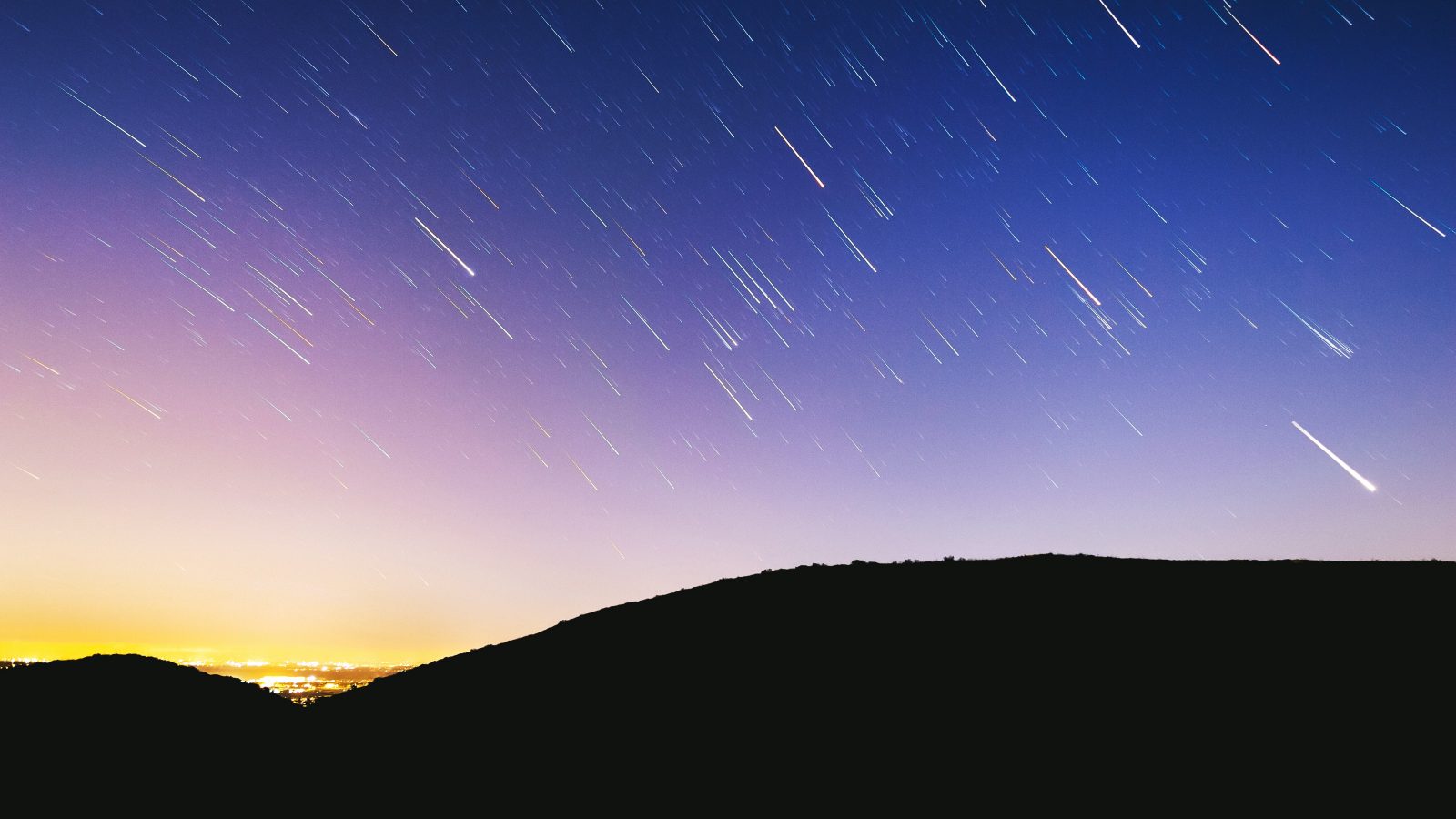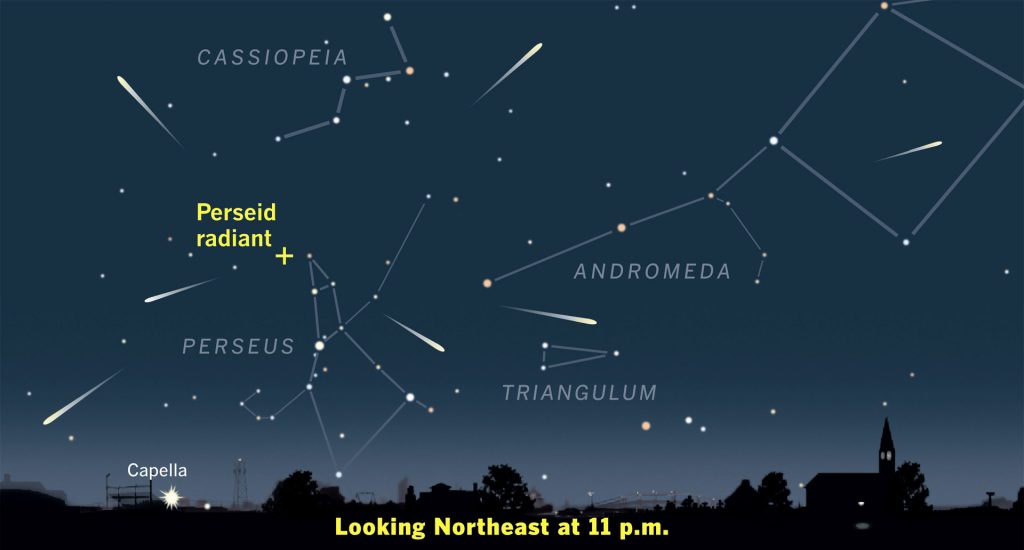
A spectacular display of shooting stars is set to grace the night sky on Sunday, August 13, as the Perseid meteor shower makes its annual debut. Here’s when, where, and everything to know…
The Perseid meteor shower is an annual event where Earth passes through the debris left behind by the Swift-Tuttle comet, named after the two astronomers who discovered it.
As Earth intersects with the path of the comet, the debris of mostly dust and small rocks gets gulped up by our planet’s gravity and enters the atmosphere as bright streaks of light in the sky known as meteors, or as many of us call them “shooting stars.”
The name “Perseid” comes from the meteors’ apparent point of origin in the constellation Perseus. In geek mythology, Perseus is the son of Zeus and the mortal Danaë. Lore has it that the Perseid meteor shower marks the occasion when Zeus would visit Danaë, creating streaks of light in the sky.
When to watch
The best time to watch the Perseid meteor shower would be at its peak and just before dawn. When the number of meteors is at its highest. This year, it’s predicted that the peak will occur on Sunday, August 13, at 7:58 UTC (3:58 AM EST), according to EarthSky.
It’s during this time astronomers anticipate a frequency of around 90 meteors per hour or more.
Since the Perseid is known for dropping off rapidly after peak, I recommend stepping outside or setting up the telescope the night of August 13 this weekend. Luckily, the moon on Sunday will be waning crescent and won’t interfere with the meteor shower. As always, viewing is best away from cities and with clear, dark skies.
Where to look
The Perseid meteor shower can be viewed from around the world, as it is a widespread astronomical event. However, those in the Northern Hemisphere will have the best view this year. If you look about halfway up the sky to the north or east, there’s a high likelihood of spotting several fast-moving Perseid meteors.
Need a telescope? I’d recommend these Celestron telescope options for Perseid spotting.

Credit: The Old Farmers Almanac
Do Perseid meteors ever hit the ground?
It’s extremely unlikely during any shower that meteors would impact the ground, becoming meteorites. The reason being comets, like Swift-Tuttle, are primarily made of ice and small particles of dust. These two elements don’t last long, traveling at intense hypersonic speeds through Earth’s atmosphere. Almost all meteorites found today come from rocky or metallic asteroids.
Related stories:
- James Webb Space Telescope captures the Ring Nebula in never before seen details
- Mysterious ‘question mark’ object seen by NASA’s James Webb Space Telescope
- NASA detects signal from Voyager 2 after losing contact in deep space
FTC: We use income earning auto affiliate links. More.



Comments